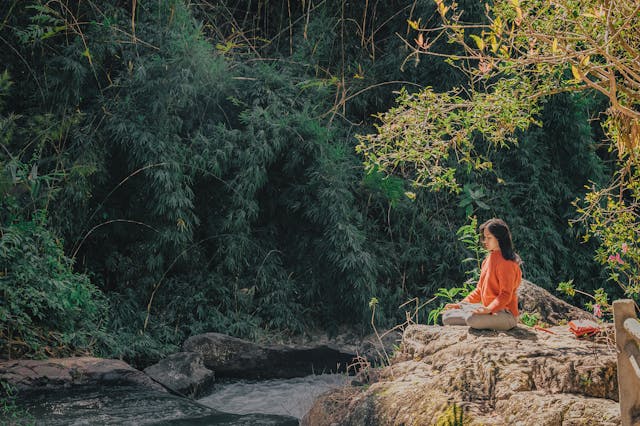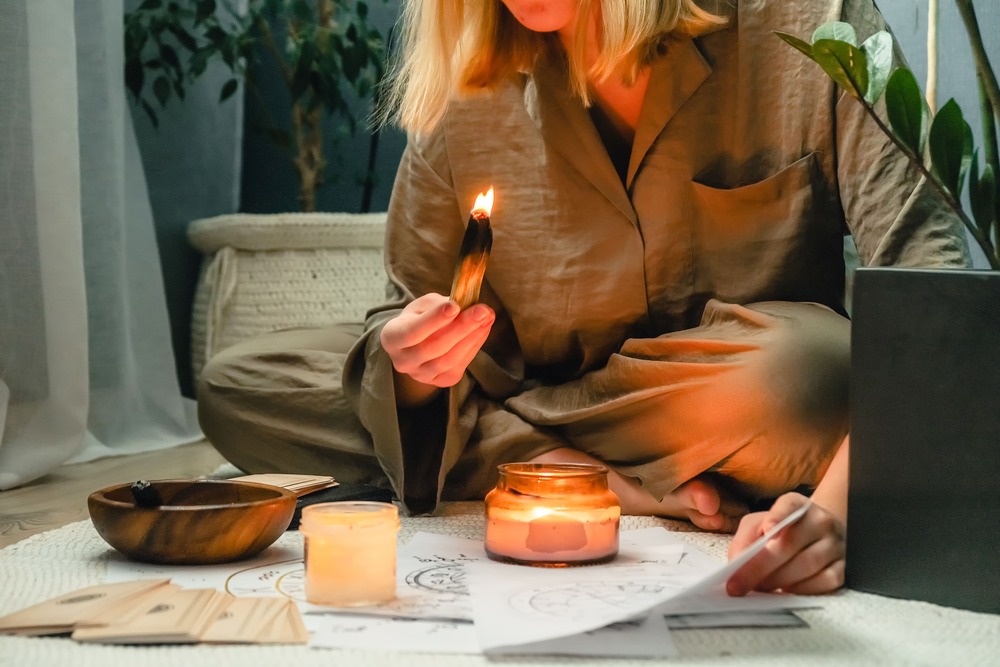Imagine tending a garden. You till the soil, plant seeds, water, and nurture the fragile green sprouts until they become vibrant blooms. Spiritual exercise is like tending the fertile garden of your soul. It’s a dynamic and diverse realm, encompassing more than just meditation or prayer. It includes mindfulness, self-awareness, and the search for inner peace.
Across cultures and religions, countless traditions have nurtured the human spirit through contemplative exercises. Whether it’s the stillness of Buddhist meditation, or the rhythmic chants of Sufi dhikr, these practices share a common aim: to become aware of and inhabit our true self, where seeds of emotional healing, personal and spiritual growth, can flourish.
The benefits of these exercises reach far beyond mere spiritual abstraction. Studies have shown how dedicated spiritual practice can enhance mental clarity, improve emotional well-being, and even bolster physical health. It’s a journey of self-discovery, a path towards living with greater intention, trust and purpose.
In this article, we consider spiritual exercise, its diverse practices, tangible benefits, and practical tips for integrating it into your own life. We’ll delve into the historical and cultural roots of these practices, discovering how they’ve helped individuals and communities navigate life’s challenges and flourish. So, let’s begin cultivating the garden within.
I. Types of Spiritual Exercises
Picture a toolbox brimming with instruments, each crafted for a unique purpose, to support and enhance your life in this world. In the inner workshop, spiritual exercise helps us be aware of and bring to life those tools, offering diverse approaches to inner exploration and growth. Let’s peek inside:
1. Meditation and Contemplative Practices

Meditation, the art of silencing the mind’s chatter, is a cornerstone of spiritual exercise. Whether it’s the focused breath awareness of Zen, the mantra-guided stillness of Hinduism, or the open awareness of mindfulness walks, these practices allow us to tap into a wellspring of inner peace.
As Lao Tzu wisely observed, “The journey of a thousand miles begins with a single step,” and mindfulness, that deliberate attention to the present moment, becomes the first step on the path to inner transformation.
Read: Purposes of Meditation
2. Prayer and Chanting
For many, prayer isn’t just a whisper or a plea; it’s a symphony of the soul. From the resonant chants of Gregorian monks to the whispered supplications of the faithful in quiet mosques, prayers act as bridges between the human and the divine.
And it’s not just about petitions; prayers can be expressions of gratitude, affirmations of faith, or simply moments of quiet communion. As the Sufi saying goes, “Wherever you are, and whatever you’re doing, be in love.” Prayer, in its myriad forms, allows us to cultivate that very essence of love and connection.
3. Qigong and More
Spiritual exercise isn’t limited to the mind; it embraces the body, too. Practices like Qigong, with its graceful movements and focused breathing, help us align our physical selves with our inner energy flow.
Tai Chi, with its slow, deliberate movements, becomes a moving meditation, enhancing balance and awareness. Even a simple walk in nature, barefoot on the earth, can become a mindful pilgrimage, connecting us to the pulse of the world around us.
4. Mindfulness and Self-Reflection Activities
Sometimes, the most potent spiritual exercises are those that hold up a mirror to our souls. Journaling, with its honest penmanship, can illuminate our inner landscapes, revealing hidden patterns and emotions.
Spending time in silence, observing our thoughts and feelings without judgment, can be a profound exercise in self-awareness. Even activities like creative expression, from painting to poetry, can become bridges to understanding the hidden facets of our beings.
These are just a few of the tools available in the workshop of our souls. As you explore each one, remember there’s no one-size-fits-all approach. Experiment, discover what resonates with your spirit, and build your own unique toolkit for inner exploration.
Read: Understanding the Types of Spirituality
II. Benefits of Spiritual Exercises
Tilling the soil of your soul isn’t simply about turning over the earth; it’s about nurturing what grows there. Just like tending a garden yields vibrant blooms, dedicated spiritual practice cultivates a rich harvest of benefits that touch every aspect of your life. Let’s explore the fruits borne from this inner cultivation:
1. Enhancing Spiritual Awareness and Connection
Spiritual exercises open the door to a deeper connection with something beyond ourselves. Whether it’s the profound stillness of meditation revealing whispers of our inner landscape or engaging in acts of service to others, as Mother Teresa succinctly put it, “There is more joy in giving than receiving,” spiritual practice allows us to share this joy – not just with others, but with the very essence of existence.
2. Emotional and Mental Health Benefits
The benefits of spiritual exercise extend far beyond the ethereal realm. Studies have shown how mindfulness practices can ease anxiety and depression, while prayer and chanting can foster feelings of gratitude and purpose.
By cultivating inner peace and self-awareness, we learn to navigate life’s storms with greater resilience, like a willow bending gracefully in the wind. Even a few minutes of daily meditation can significantly reduce stress, as one yoga instructor quipped, “If you think you don’t have 10 minutes for meditation, try an hour of panic attack.”
3. Impact on Overall Well-being and Life Satisfaction
The harvest of spiritual practice isn’t limited to emotional and mental wellness; it spills over into all aspects of life. Improved focus and concentration can enhance productivity, while heightened self-awareness can lead to better relationships and decision-making.
Spiritual exercise, in its own way, becomes a powerful tool for transforming our own inner world, which in turn ripples outward, impacting our families, communities, and the world at large.
III. Integrating Spiritual Exercises into Daily Life

Now, you might be wondering, “But how do I fit this into my already busy life?” Fear not, fellow gardeners of the soul! Just like a single seed requires consistent care to blossom, small yet dedicated efforts can weave spiritual practice into the fabric of your day. Here are a few practical tips for beginners:
- Start small: Dedicate five minutes a day to meditation or simply observe your breath during your morning commute. Even the smallest sprout deserves nurture in order to grow into a healthy plant.
- Find your rhythm: Experiment with different practices – from nature walks to journaling – and discover what resonates with your spirit. Remember, there’s no one-size-fits-all garden!
- Integrate with daily activities: Listen to calming music while doing chores, practice mindful eating, or offer silent gratitude before meals. Let spirituality infuse the practice of your daily life.
Spiritual Exercises in the Modern World
Of course, integrating spiritual practice into a modern world filled with deadlines and distractions can be a challenge.
Just like tending your garden doesn’t require extravagant tools, cultivating your inner life doesn’t require drastic lifestyle changes. Consistency and intention are key, even if it’s just a few moments stolen in the midst of your busy day.
Read: Understading Spiritual Healing
IV. Resources and Further Learning
Just like any gardener seeks knowledge and inspiration to nurture their plants, the journey of spiritual growth thrives on continuous learning and exploration. Here are some resources to keep your inner garden flourishing:
Books:
- Man’s Search for Meaning by Viktor Frankl: A powerful read delving into finding purpose and meaning amidst life’s challenges.
- The Power of Now by Eckhart Tolle: A timeless guide to finding peace and stillness in the present moment.
- Daring Greatly by Brené Brown: A heartfelt exploration of vulnerability and wholehearted living.
Courses and Workshops:
- Mindfulness-Based Stress Reduction (MBSR): Learn practical techniques to manage stress and cultivate inner peace.
- Online meditation and yoga classes: Numerous platforms offer guided practices for all levels.
Further Exploration:
- 2023’s Must-Read Spiritual Books for Soulful Growth: Dive into a curated selection of inspiring reads to enrich your understanding of diverse spiritual paths.
Remember, the best resources are those that resonate with your unique voice and journey. Be open to exploring different practices, teachers, and approaches. Find what sparks your soul and nurtures your inner bloom.
As Paulo Coelho said, “There is only one thing more precious than time, and that is what we do with it.” Invest time in your spiritual growth, and watch your life blossom with joy, purpose, and a deeper connection to yourself and the world around you.
V. Final Thoughts : Your Garden Awaits
As you turn the final page of this article, dear reader, imagine your inner garden bathed in sunlight, the soil rich and alive, vibrant blooms reaching towards the sky.
The journey of spiritual exercise is not a destination, but a path, one you walk with every conscious breath, every mindful moment. Remember, the tools are at your fingertips: the quietude of meditation, the rhythm of prayer, the flow of movement, the reflection of introspection.
Choose your practices, experiment, find what makes your soul sing. Don’t be discouraged by weeds of doubt or the occasional withered leaf. Tend to your garden with patience and love, and witness the resilience of your spirit unfold. Share your blooms with others, inspire, and be inspired. Together, let’s cultivate a world where inner gardens flourish, enriching not just ourselves, but the tapestry of life around us.
May your journey be blessed with peace, purpose, and an ever-deepening connection to your truest self. Go forth, dear gardener, and watch your soul blossom.






